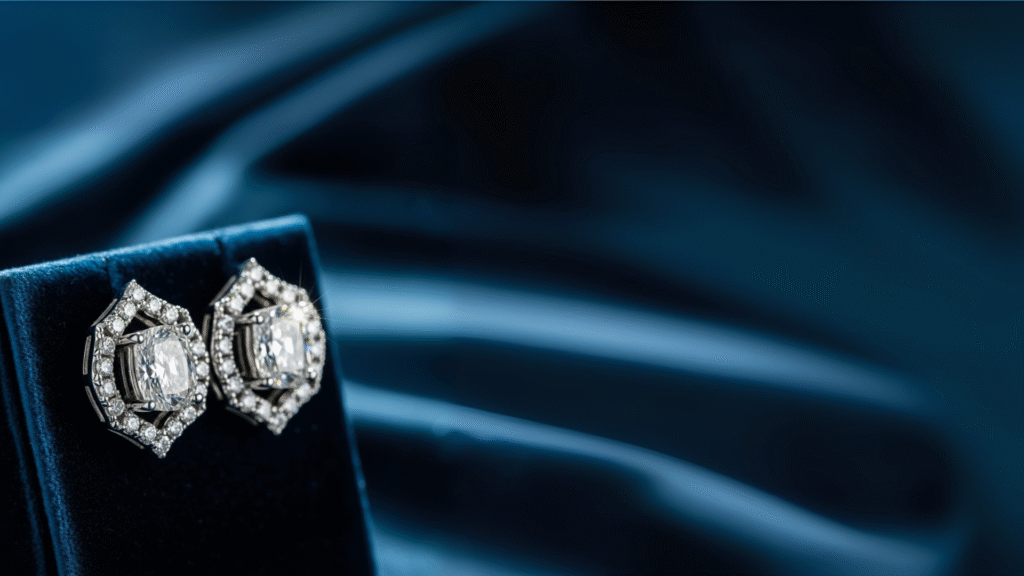Demystifying Lab-Grown Diamond Grading: A Guide for Informed Buyers
The foundation of all diamond grading, whether natural or lab-grown, is the 4Cs: Cut, Color, Clarity, and Carat Weight. These criteria provide a standardized language for describing a diamond’s quality. However, the origin of a diamond introduces unique nuances to how these characteristics are assessed and presented.
The Grading Differences
Clarity: A Clean Slate Lab-grown diamonds are created in controlled laboratory environments, which often results in fewer and different types of inclusions than those found in mined diamonds. For instance, a common inclusion in a lab-grown diamond might be a metallic inclusion from the HPHT (High-Pressure High-Temperature) process or a faint striation from the CVD (Chemical Vapor Deposition) process. These are fundamentally different from the crystal and feather inclusions typically seen in natural diamonds. A certificate will map these inclusions on a diagram, giving you a clear picture of what makes your diamond unique.
Color: A Matter of Method While lab-grown diamonds can achieve the same D-Z color grades as natural diamonds, their color can be a byproduct of their growth method. CVD diamonds, for example, may have a brown or grayish tint that requires post-growth treatment to remove. An educational piece should highlight how the certificate notes these treatments and the growth method used, empowering buyers with a full picture of the stone’s history.
Cut and Carat: A Consistent Standard The grading of Cut and Carat weight remains largely consistent between lab-grown and natural diamonds. Cut is a measure of a diamond’s proportions, symmetry, and polish, all of which contribute to its brilliance and sparkle. Carat weight is a straightforward measure of its size. For both GIA and IGI, an “Excellent” or “Ideal” cut grade is the goal for maximum light performance.

GIA vs. IGI: A Critical Comparison of Lab-Grown Diamond Certification
While many reputable labs grade lab-grown diamonds, GIA and IGI are the undisputed leaders in this space. Understanding their distinct approaches is crucial for making an informed purchasing decision.
IGI: The Pioneer of Lab-Grown Diamond Certification
IGI was an early and active adopter of lab-grown diamond certification, earning them a strong reputation and market share in this sector. Their reports are widely used by retailers and are known for being accessible and comprehensive.
- Growth Method Disclosure: The IGI certificate explicitly states whether the diamond was created using the HPHT or CVD method. This transparency is a significant advantage for buyers who want to know the full story of their diamond.
- Detailed Cut Analysis: IGI is highly regarded for its detailed cut analysis, which often includes a visual representation of the diamond’s light performance.
- Cost-Effectiveness and Speed: IGI reports are generally more affordable and have a faster turnaround time than GIA reports, making them a popular choice for both jewelers and consumers.
GIA: The Gold Standard's Evolving Role
While GIA was slower to embrace lab-grown diamonds, they have since become a major player. The GIA’s stringent grading standards and long-standing reputation as the industry authority on natural diamonds have given them a unique position in the lab-grown market.
- Full 4Cs Grading: GIA’s lab-grown reports use the same color and clarity scales (D-Z and FL-I3) as their natural diamond reports, providing a familiar and trusted benchmark.
- Origin Inscription: Every GIA-certified lab-grown diamond is laser-inscribed with the phrase “LABORATORY-GROWN” on its girdle, a critical security feature that ensures the stone’s origin is always clear.
- Focus on Stringent Standards: The GIA’s reputation for tight, consistent grading means that a GIA-certified diamond will almost always be of the quality stated on its report.
The Crucial Role of the Certificate for the Consumer
A lab-grown diamond certificate is more than just a piece of paper; it’s the single most important document you will receive with your diamond. It serves as your assurance of quality and authenticity. Without a certificate, you are relying solely on the word of a vendor, which is not a risk worth taking for such a significant purchase. The report number inscribed on the diamond’s girdle allows you to verify its details online through the grading lab’s website, providing a powerful layer of trust and security.
Why the Certificate is More Important for Lab-Grown Diamonds
The burgeoning market for lab-grown diamonds has created an environment where understanding the details of your purchase is more important than ever. The certificate serves as a roadmap to your diamond’s journey, from its creation to its final cut. It provides the crucial context that natural diamonds inherently possess through their geological history. Knowing the growth method, any post-growth treatments, and the specifics of its 4Cs allows you to compare stones and prices with confidence.
Actionable Takeaways for Your Lab-Grown Diamond Purchase
- Prioritize the Certificate: Always insist on a report from a reputable grading lab like IGI or GIA.
- Understand the Report Details: Pay attention to the clarity plot, the color and clarity grades, and any notes on the growth method or treatments.
- Cross-Reference and Verify: Use the lab’s online database to confirm the certificate number and its details.
- Balance Price and Quality: While IGI-certified diamonds may be a more affordable choice, GIA offers the ultimate assurance of strict grading. The right choice depends on your personal priorities.
